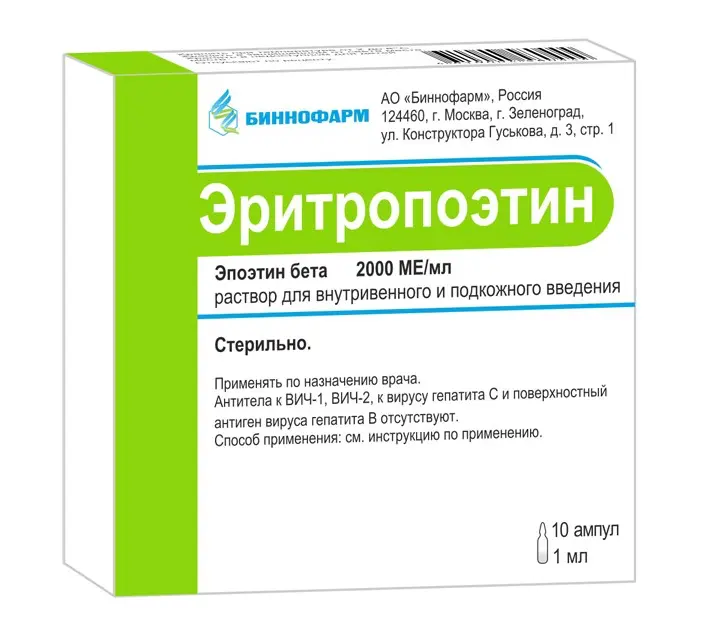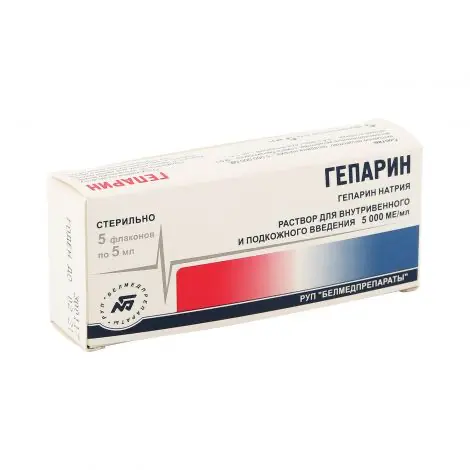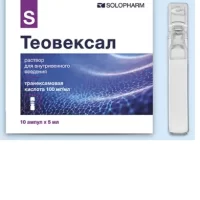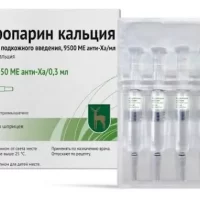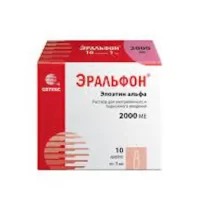Description
Erythropoietin Pharmacodynamics
Epoetin beta is a glycoprotein that specifically stimulates erythropoiesis, activates mitosis and erythrocyte maturation from erythrocyte precursor cells. Recombinant epoietin beta is synthesized in mammalian cells that have the gene encoding human erythropoietin embedded in them. By its composition, biological and immunological properties epoetin beta is identical to natural human erythropoietin. Administration of epoetin beta leads to an increase in hemoglobin and hematocrit, improving blood supply to tissues and heart function. The most pronounced effect of epoetin beta administration is observed in anemia caused by chronic renal failure. In very rare cases, during prolonged use of erythropoietin for therapy of anemic conditions, formation of neutralizing antibodies to epoetin beta with the development of partial red cell aplasia or without it may be observed.
Indications
Anemia in patients with chronic renal failure, including those on dialysis.
Prophylaxis and treatment of anemia in patients with solid tumors, receiving chemotherapy with platinum preparations, which can cause anemia (carboplatin 75 mg/m2 per cycle, carboplatin 350 mg/m2 per cycle).
Treatment of anemia in patients with myeloma disease, non-Hodgkins lymphoma of low malignancy, and chronic lymphocytic leukemia receiving antitumor therapy, with relative insufficiency of endogenous erythropoietin (defined as erythropoietin concentration in serum, disproportionately low in relation to anemia degree).
Increased volume of donor blood intended for subsequent autotransfusion.
Prevention of anemia in premature infants born with a body weight of 750-1500 g, up to 34 weeks of pregnancy.
Contraindications
Hypersensitivity to the drug or its components, partial red cell aplasia after previous therapy with any epoetin beta, uncontrolled arterial hypertension, inability to perform adequate anticoagulant therapy, myocardial infarction within a month after the event, unstable angina or increased risk of deep vein thrombosis and thromboembolism in preoperative blood collection program before surgical procedures, porphyria.
With caution: in patients with thrombosis (in anamnesis), with malignant tumors, with sickle-cell anemia, with moderate anemia without iron deficiency, with thrombocytosis, with refractory anemia, epilepsy, chronic liver failure, nephrosclerosis, in patients with body weight less than 50 kg for increasing of donor blood volume for subsequent autotransfusion.
Use during pregnancy and lactation
As there is no sufficient experience in human use of erythropoietin during pregnancy and breastfeeding, erythropoietin should be prescribed only if the expected benefits of its use exceed the possible risk for the fetus and the mother.
Dosage and administration
- Treatment of anemia in patients with chronic renal failure.
- Subcutaneously or intravenously. During intravenous administration the solution should be injected within 2 minutes; for patients on hemodialysis – via arteriovenous shunt at the end of dialysis session. Patients who are not on hemodialysis should preferably receive the drug by injection, to avoid peripheral vein puncture.
- The goal of treatment is to achieve a hematocrit level of 30-35% or to eliminate the need for blood transfusions. Weekly increase in hematocrit should not exceed 0.5%. Its level of 35% should not be exceeded. In patients with arterial hypertension, cardiovascular and cerebrovascular diseases weekly hematocrit increase and its target values should be determined individually, depending on the clinical picture. For some patients the optimal hematocrit value is below 30%.
- Treatment with erythropoietin is carried out in 2 stages:
- Initial therapy (correction stage). Subcutaneously, the initial dose is 20 IU/kg 3 times a week. In case of insufficient hematocrit increase (less than 0.5% per week) the dose can be increased monthly by 20 IU/kg 3 times per week. The total weekly dose can also be divided into daily injections in smaller doses or administered in one dose.
- Intravenously, at an initial dose of 40 IU/kg body weight 3 times a week. If hematocrit does not increase sufficiently after one month, the dose can be increased to 80 IU/kg 3 times a week. If there is a need for further dose escalation, the dose should be increased by 20 IU/kg 3 times a week at monthly intervals.
- Regardless of the route of administration, the highest dose is no more than 720 IU/kg per week.
- Supportive therapy. To maintain hematocrit at 30-35%, the dose should first be reduced by half of the dose in the previous injection. Subsequently, maintenance dose is adjusted individually, at intervals of 1-2 weeks. When administered by injection, a weekly dose may be given once or in 3 to 7 injections per week.
- In children, the dose depends on age (as a rule, the younger the child is, the higher doses of epoetin beta are required). However, since it is not possible to predict individual response, it is advisable to start with the recommended regimen.
- Treatment with erythropoietin is usually lifelong. If necessary, it can be discontinued at any time.
- Prevention and treatment of anemia in patients with solid tumors.
- Patients with solid tumors receiving chemotherapy by preparations of platinum, treatment by Erythropoietin is shown at a level of hemoglobin before the beginning of chemotherapy not exceeding 130 g/l.
- The drug is administered subcutaneously, in an initial dose of 450 IU/kg, dividing a weekly dose into 3-7 injections. If hemoglobin level does not increase sufficiently after 4 weeks, the dose should be doubled. The duration of treatment is no more than 3 weeks after the end of chemotherapy.
- If during the first cycle of chemotherapy hemoglobin level decreases by more than 10 g/l despite treatment with epoetin beta, further use of the drug may be ineffective.
- An increase in hemoglobin of more than 20 g/l per month or to a level above 140 g/l should be avoided. If hemoglobin increases more than 20 g/l per month, the dose of epoetin beta should be reduced by 50%. If hemoglobin level exceeds 140 g/l, the drug is withdrawn until it decreases to the level of ≤120 g/l, and then the therapy is resumed in a dose half of the previous weekly dose.
- Treatment of anemia in patients with myeloma, low-grade non-Hodgkin’s lymphoma, or chronic lymphocytic leukemia.
- These patients usually have a deficiency of endogenous erythropoietin. It is diagnosed by the ratio between the degree of anemia and insufficient concentration of erythropoietin in the serum.
- Relative erythropoietin insufficiency occurs:
- At hemoglobin level, g/L Serum erythropoietin concentration, IU/ml
- > 90 <100 ≤ 100
- > 80 ≤ 90 ≤ 180
- ≤ 80 ≤ 300
- The above parameters should be determined no earlier than 7 days after the last hemotransfusion and the last cycle of cytotoxic chemotherapy.
- The drug is administered subcutaneously; the weekly dose may be divided into 3 or 7 injections.
- The recommended starting dose is 450 IU/kg per week. If after 4 weeks the haemoglobin level has increased by at least 10 g/l, the treatment is continued in the same dose. If after 4 weeks hemoglobin has risen by less than 10 g/l, the dose can be increased to 900 IU/kg/week. If after 8 weeks of treatment hemoglobin has not increased at least by 10 g/l, positive effect is unlikely, and the drug should be discontinued.
- In chronic lymphocytic leukemia the treatment should be continued up to 4 weeks after the end of chemotherapy. The maximum dose should not exceed 900 IU/kg per week.
- If during 4 weeks of treatment the hemoglobin level increases by more than 20 g/l, the dose of Erythropoietin should be halved. If the hemoglobin level exceeds 140 g/l, treatment with the drug should be interrupted until it drops to a value of ≤130 g/l, after which the therapy should be resumed at a dose half the previous weekly dose.
- Treatment should be resumed only if Erythropoietin deficiency is the most probable cause of anemia.
- Preparation of patients for blood donation for subsequent autohemotransfusion.
- Intravenously or subcutaneously twice a week for 4 weeks. In cases when the patient’s hematocrit index (≥33%) allows blood sampling, Erythropoietin is administered at the end of the procedure. Throughout the course of treatment hematocrit should not exceed 48%.
- The dose of the drug is determined by the transfusiologist and surgeon individually, depending on how much blood will be taken from the patient and his erythrocyte reserve. The volume of blood to be taken from the patient depends on the anticipated blood loss, available techniques of blood conservation and the general condition of the patient; it must be sufficient to avoid transfusion from another donor. The volume of blood to be taken from the patient is expressed in units (one unit is equivalent to 180 ml of red blood cells).
- The possibility of donation depends mainly on the blood volume of a given patient and the initial hematocrit. Both determine the endogenous red blood cell reserve, which can be calculated according to the following formula:
- endogenous erythrocyte reserve = blood volume (ml) x (hematocrit – 33): 100
- women: blood volume (ml) = 41 (ml/kg) x body weight (kg) + 1200 (ml)
- Men: blood volume (ml) = 44 (ml/kg) x body weight (kg) + 1600 (ml) (for body weight ≥45 kg).
- The indication for use of Erythropoietin and its single dose are determined by nomograms based on the required volume of donor blood and endogenous erythrocyte reserve.
- The maximum dose is when administered intravenously – no more than 1600 IU/kg per week; when administered subcutaneously – 1200 IU/kg per week.
- Prophylaxis of anemia in premature infants.
- Subcutaneously, 250 IU/kg 3 times a week. Treatment with epoetin beta should start as early as possible, preferably from day 3 of life and continue for 6 weeks.

